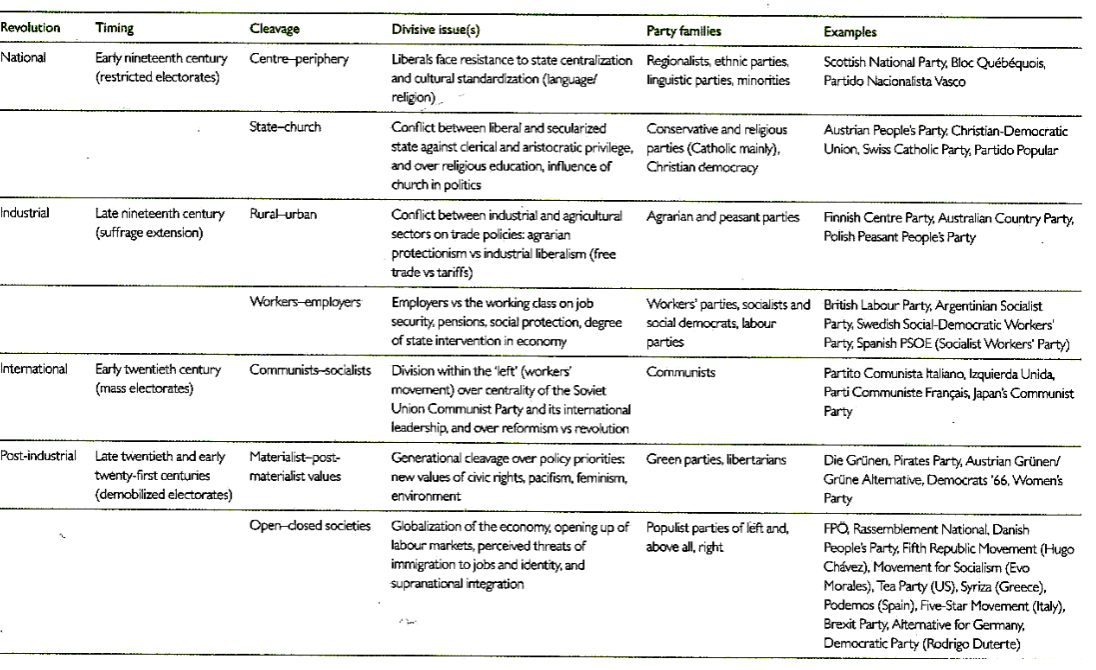Comparative Politics Parties and Party Systems
1/9
There's no tags or description
Looks like no tags are added yet.
Name | Mastery | Learn | Test | Matching | Spaced |
|---|
No study sessions yet.
10 Terms
Origins of the party systems, cleavages
What kind of parties? How many parties are there? How do they
behave?
Lipset and Rokkan: Cleavages created by industrial and national
revolutions
Cleavages are axes dividing society in different (opposed) groups
Centre - periphery
Secular - religious
Rural - urban
Workers - employers
Material - postmaterial
Open - closed societies
Education
Space, stability (time), electoral thresholds

Number and size of parties (morphology)
-Numerical rules (quantitative)
Many small parties (fragmented system) or a few large parties
(concentrated system)?
Qualitative rules
Coalition potential
Blackmail potential
Four party systems
Types not considered: (1) single-party (only one legal) and (2)
hegemonic party systems
Dominant party systems
One large party above absolute parliamentary majority for a long time
Free, competitive elections
No alternation of power, no coalitions
ANC (South Africa), PRI (Mexico), SDP (Sweden), AKP (Turkey)
Two-party systems
Two large parties dominate the system, equal chances of winning,
swing voters important, alternation in power, no coalitions
High threshold in FPTP: programs to maximize number of votes
(ideological moderation, similarity leads to alternation)
US, Canada, UK
Also in PR systems: Spain, Germany
Multiparty
Many parties, none with absolute majority, different sizes, parties run
individually in elections but then government coalitions
Niche parties and small segments of the electorate > no need for
ideological moderation
Government change through coalition swaps
Netherlands, Nordic countries
Moderate
(centripetal competition, limited ideological distance)
polarized
(centrifugal, substantial ideological distance)
Weimar Republic, Postwar Italy
Bipolar
Combine elements of multiparty and two-party systems
Parties run as electoral alliances
France until 2017 and currently (Nouveau Front Populaire), Italy (but
5S Movement, 2018)
Electoral laws
Mechanisms for the translation of votes into parliamentary seats
Two main types of electoral systems
A) majoritarian systems in single-member constituencies
Only the most voted party gets the seat, plurality, FPTP, lower number
of parties in parliament, strategic vote important, incentive to merge,
distort party votes
(B) Proportional systems in multi-member constituencies
Seats allocated in proportion to the share of votes, higher number of
parties in parliament, strategic vote not important, no incentive to
merge
Number of parties in parliament depends also on the
"nationalization" of parties